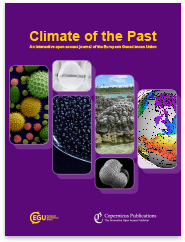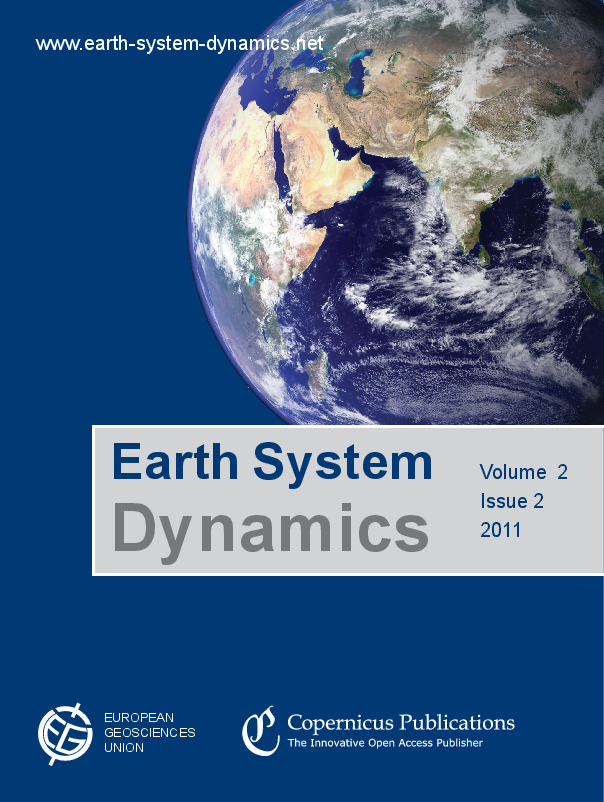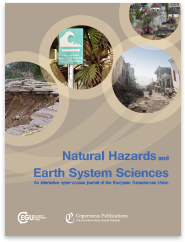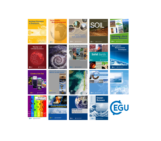
Each month we feature specific Divisions of EGU and during the monthly GeoRoundup we put the journals that publish science from those Divisions at the top of the Highlights section. For August, the divisions we are featuring are Natural Hazards, Climate: Past, Present & Future, and Seismology. They are served by the journals: Climate of the Past (CP), Earth System Dynamics (ESD), Weather and Climate Dynamics (WCD), Natural Hazards and Earth System Sciences (NHESS), and Solid Earth (SE).
Featured highlights
Late Quaternary glacial maxima in southern Patagonia: insights from the Lago Argentino glacier lobe – 28 August 2024
Investigating past glaciated regions is crucial for understanding how ice sheets responded to climate forcings and how they might respond in the future. We use two independent dating techniques to document the timing and extent of the Lago Argentino glacier lobe, a former lobe of the Patagonian Ice Sheet, during the late Quaternary. Our findings highlight feedbacks in the Earth’s system responsible for modulating glacier growth in the Southern Hemisphere prior to the global Last Glacial Maximum.
Continuous synchronization of the Greenland ice-core and U–Th timescales using probabilistic inversion – 9 August 2024
The first continuously measured transfer functions that quantify the age difference between the Greenland ice-core chronology 2005 (GICC05) and the U–Th timescale are presented. The transfer functions were generated using a novel probabilistic algorithm for the synchronization of proxy signals. The results greatly improve the accuracy and precision of previous synchronization estimates and reveal that the annual-layer counting error of GICC05 is less systematic than previously assumed.
Tipping point detection and early warnings in climate, ecological, and human systems– 19 Aug 2024
Tipping points are abrupt, rapid, and sometimes irreversible changes, and numerous approaches have been proposed to detect them in advance. Such approaches have been termed early warning signals and represent a set of methods for identifying changes in the underlying behaviour of a system across time or space that might indicate an approaching tipping point. Here, we review the literature to explore where, how, and which early warnings have been used in real-world case studies so far.
Absence of causality between seismic activity and global warming – 19 August 2024
It was recently suggested that global warming can be explained by the non-anthropogenic factor of seismic activity. If that is the case, it would have profound implications. We have assessed the validity of the claim by using a statistical technique that evaluates the existence of causal connections between variables, finding no evidence for any causal relationship between seismic activity and global warming.
ESD Ideas: Exoplanet, origins of life and biosphere researchers offer a perspective fundamental to ensuring humanity’s future – 16 August 2024
Scientists exploring the histories of planets and life are uniquely positioned to communicate a perspective that is fundamental to our survival: humanity is wholly embedded in Earth and its biosphere. There is no escaping our planet and its history. Only policies that build on this perspective will contribute to a flourishing future for humanity. We offer a few brief glimpses of this cosmic perspective and call on our colleagues to acknowledge the powerful stories emanating from their work.
Natural Hazards and Earth System Sciences:
Always on my mind: indications of post-traumatic stress disorder among those affected by the 2021 flood event in the Ahr valley, Germany – 23 August 2024
Despite the visible flood damage, mental health is a growing concern. Yet, there is limited data in Germany on mental health impacts after floods. A survey in a heavily affected region revealed that 28 % of respondents showed signs of post-traumatic stress disorder 1 year later. Risk factors include gender, serious injury or illness due to flooding, and feeling left alone to cope with impacts. The study highlights the need for tailored mental health support for flood-affected populations.
Highlights
Atmospheric Chemistry and Physics:
Using historical temperature to constrain the climate sensitivity, the transient climate response, and aerosol-induced cooling – 12 August 2024
Atmospheric Measurement Techniques
Atmospheric H2 observations from the NOAA Cooperative Global Air Sampling Network– 23 August 2024
Sourcing and long-range transport of particulate organic matter in river bedload: Río Bermejo, Argentina – 19 August 2024
Hydrology and Earth System Sciences
An increase in the spatial extent of European floods over the last 70 years – 23 August 2024
Can corporate supply chain sustainability standards contribute to soil protection? 2 August 2024
EGU in the news – August
A paper by The Cryosphere on the melting of the Arctic glaciers sparks a conversation in an article in Polar Journal.
EGU listed as one of the science communication grants awarder in a recent Nature article.
iCRAG has been selected to host European Geosciencs Union (EGU) Geoscience Day this November.





